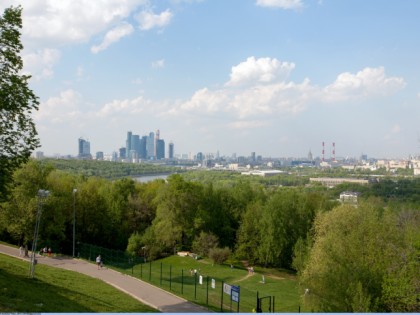Sparrow Hills, or the Best Panorama of Moscow
Sparrow Hills (Vorobyovy Gory) is one of the legendary seven hills, over which the capital of Russia is spread out. This high bank of the Moskva River served an observation platform for the Russian monarchs, book heroes and numerous conquerors, including Napoleon, who gave a glance around the great city from here.
The Sparrow Hills (Vorobyovy Gory) immortalize the name of the boyars Vorobyovs, who owned the village Vorobyovo here in the 14th century. The boyars received this land from the Moscow dukes for their diligent service. The hills offer a truly fascinating view of Moscow! There were glass and mirror factories operating on the Sparrow Hills in the XVII century, which were built here due to a lot of clean and fine sand. The first park was laid out on the Sparrow Hills in the 1930s. In 1935 they were renamed as Lenin Hills (in honor of V.I. Ulyanov-Lenin), and in 1948 an observation platform appeared here, offering a magnificent view of the Russian capital. One of the first Moscow "skyscrapers", the building of the Moscow State University, the height of which, together with the spire is 240 meters, was built just on these hills. From the observation platform you can see the Metromost (Luzhniki Metro Bridge) and the Vorobyovy Gory metro station. It was opened in January 1959 and was called "Leninskiye Gory" at the time. The historical name was given back to the area in 1999. Today the Sparrow Hills are united with Gorky Park and Neskuchny Garden. This is one of the most favorite places for Muscovites to walk around. And if you have time, make some effort to go from the observation deck down and wander through the narrow forest paths and even reach the Moskva River bank. Here, there is a ski ramp with a lift, and an interactive map of Moscow. Also here you can find Russian pancakes, boiled corn and tasty Moscow ice cream, and eat it all this enjoying the view of the city. Many are attracted by the small Church of the Life-giving Trinity. The present building of the church was erected in 1813. It miraculously escaped destruction during the invasion of Napoleon's troops in 1812. Its appearance and interiors were preserved in its original form even in the Soviet period!




































